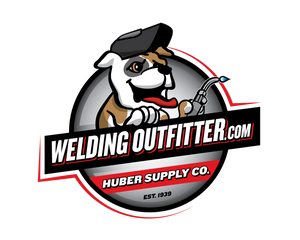



Cut resistant gloves are a relatively new item all things considered. Until recently I had no clue some of the specifics behind these types of gloves. Some of the specifics that I am talking about are what coating should I use, what ANSI Cut Levels mean, and how they test for Cut Levels. Luckily we have a great Tillman rep here at WeldingOutfitter.com and he was able to sit down and cover their new line of cut resistant gloves and what all the specifics mean. I wanted to share some of the information on these gloves that he shared with me.
Tillman Cut Resistant Gloves - Coatings
Picking a glove with the right coating is important when picking a cut resistant gloves. The 4 types that I will be writing about are smooth nitrile, sandy nitrile, dotted micro foam nitrile, and polyurethane.
- Smooth Nitrile allows the wearer of the glove a dry grip. This material will not absorb any liquids and keeps the hand of the wearer dry. The Tillman 952 Cut Resistant Glove has this coating and can be found at Tillman 952 Smooth Nitrile Glove Product Page.
- Sandy Nitrile enhances grip and reduces slippage in rugged and wet applications. It works the best when used in moderately oily areas like mechanical work and steel work. The Tillman 954 Cut Resistant Glove has this coating and can be found at Tillman 954 Sandy Nitrile Glove Product Page.
- Dotted Micro Foam Nitrile has dots that form channels to help water escape from the grip zone. This coating provides great handling in very oily conditions. The Tillman 956 Cut Resistant Glove has this coating and can be found at Tillman 956 Dotted Micro Foam Nitrile Glove Product Page.
- Polyurethane allows resistance to abrasion and dry grip. Polyurethane is usually thinner and allows for better glove dexterity. Tillman has two cut resistant gloves that offer this coating the 958 Cut Resistance Level 5 Glove and 964 Cut Resistance Level 3 Glove.
Tillman Cut Resistant Gloves - Cut Levels
There are 5 levels of cut resistance with 5 being the best and 1 being poorest. Every company has a different safety standard so make sure to look at what you need on the job for your cut level rating. Obviously the higher the cut level the higher the price. Tillman has a great chart to explain the different levels of Cut Ratings.

Tillman Cut Resistant Gloves - How Do They Test Gloves
How do they test cut resistance? Well there is two different cut level systems that Tillman uses to measure their gloves the ANSI (North American) way and the EN388 (European) way. For ANSI ratings they use a blade that is not moving the is directly applied downward to the material. For EN388 ratings they use a moving blade like a circular saw applied to the material. The picture below goes into more detail. As you can see the at the bottom the EN388 has a rating system of 4 digits laid out XXXX. This rating system is stamped on to every Tillman Glove so you exactly what your glove ranks well at.


